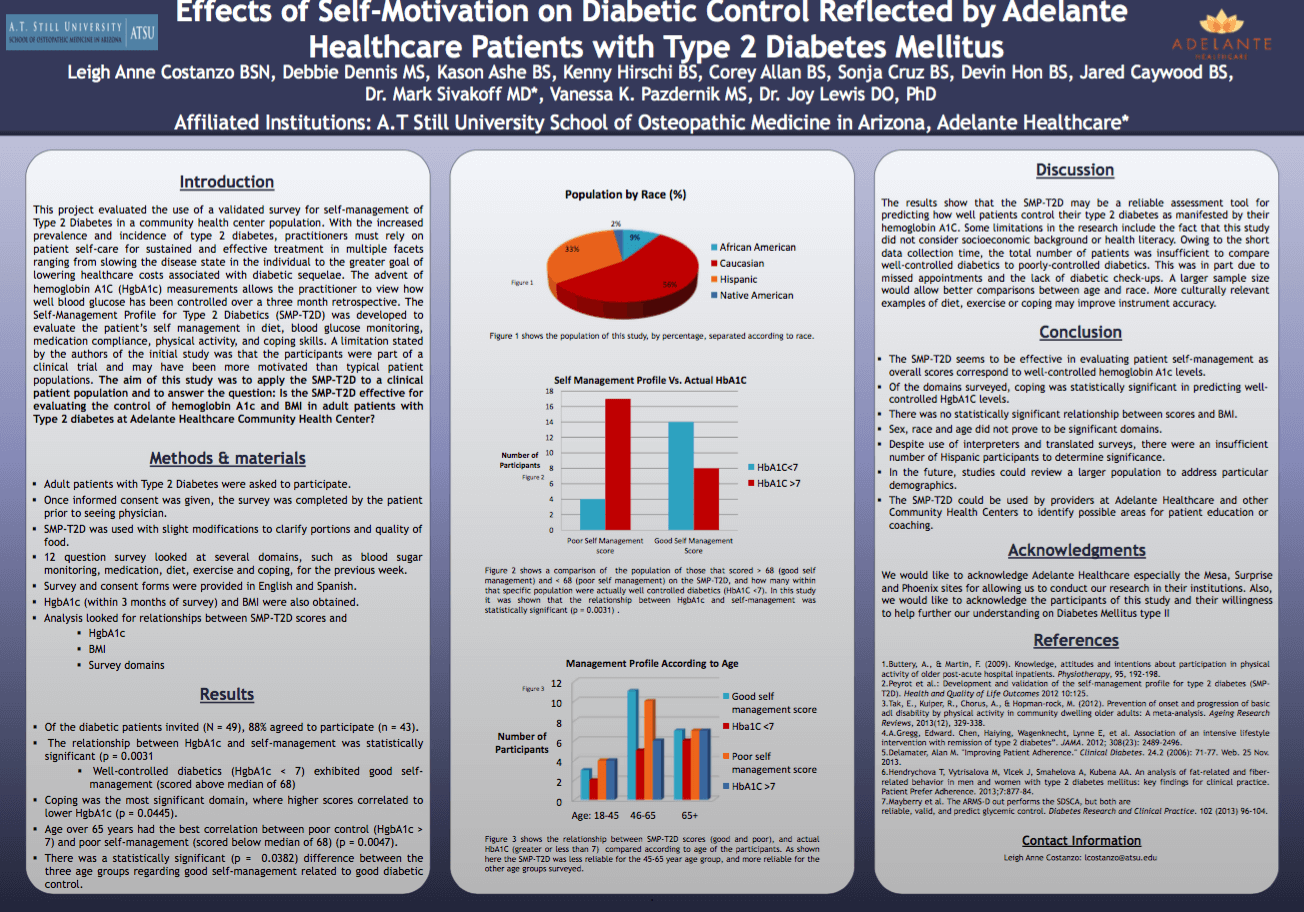Effects of Self-Motivation on Diabetic Control
Reflected by Adelante Healthcare Patients with Type 2 Diabetes Mellitus
Evidence has shown that contextual learning is proven to be a more effective learning design than those methods that impose educational divisions. That’s why SOMA students begin standardized patient interactions as early as their first year, and then embark on the next three years of diverse patient interactions through their work at community health centers.
In Year 2, SOMA medical students participate in an Integrated Clinical Experience (ICE), which focuses on:
- Professionalism and ethics
- Communication skills
- Data gathering and processing
- Population and preventative medicine.
Part of ICE requires SOMA medical students to follow a panel of 10 patients longitudinally during year two, under the supervision of Community Campus faculty and clinical preceptors. While following these patients, SOMA students develop an understanding of the interactions that occur between the various components of the health care delivery system and observe these patients, their disease states, and treatments over time. Gaining this extended experience with patients produces better prepared doctors.
Purpose
This project evaluated the use of a validated survey for self-management of type 2 Diabetes in a community health center population. Does the Self-Management Profile for Type 2 Diabetics (SMP-T2D) demonstrate effectiveness for evaluating the control of hemoglobin A1c and BMI in adult patients with Type 2 diabetes in the Adelante Healthcare population?
Methods
Investigators asked all patients with Type 2 Diabetes to participate. Those who gave informed consent were given the survey by the investigator to complete before to seeing their physician. Information on the patient’s most current HgbA1c (within 3 months of visit) and BMI were collected at the same visit. Data were analyzed for correlation by comparing scores on the SMP-T2D and HgbA1c levels and BMI levels. Analysis was also completed between individual domains of medicine compliance, exercise, diet, psychological coping and HgbA1c.
Principal Findings
Of the diabetic patients invited, 88% agreed to participate (N = 49, n = 43). The relationship between HgbA1c and self-management was statistically significant (p = 0.0031) as well- controlled diabetics (HgbA1c < 7) exhibited good self-management (scored above median of 68). Coping was the most significant domain, where higher scores correlated to lower HgbA1c (p = 0.0445). Age over 65 years had the best correlation between poor control (high HgbA1c) and 6 poor self-management (low score) (p = 0.0047). There was a statistically significant p = 0.0382 difference between the three age groups regarding good self-management related to good diabetic control.
Conclusions
The SMP-T2D seems to be effective in evaluating patient self-management as overall scores correspond to well-controlled hemoglobin A1c levels. Of the domains surveyed (monitoring, medication, diet, exercise and coping), coping was statistically significant in predicting well- controlled HgbA1C levels. There was no statistical significant relationship between scores and BMI. Sex, race and age did not prove to be significant domains; despite use of interpreters and translated surveys, there were an insufficient number of Hispanic participants to determine significance. In the future, studies could review a larger population to address particular demographics. The SMP-T2D could be used by providers at Adelante Healthcare and other Community Health Centers to identify possible areas for patient education or coaching.
Limitations
The study did not consider socioeconomic background or health literacy. Owing to the short data collection time, the total number of patients was insufficient to compare well-controlled diabetics to poorly-controlled diabetics. This was in part due to missed appointments and the lack of diabetic check-ups. A larger sample would also provide data related to age and race. More culturally relevant examples of diet, exercise or coping may improve instrument accuracy.
